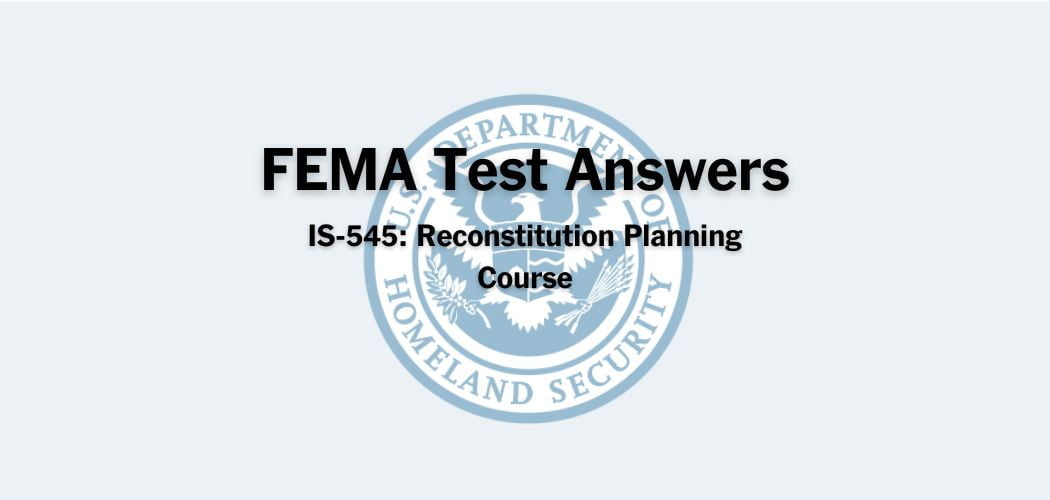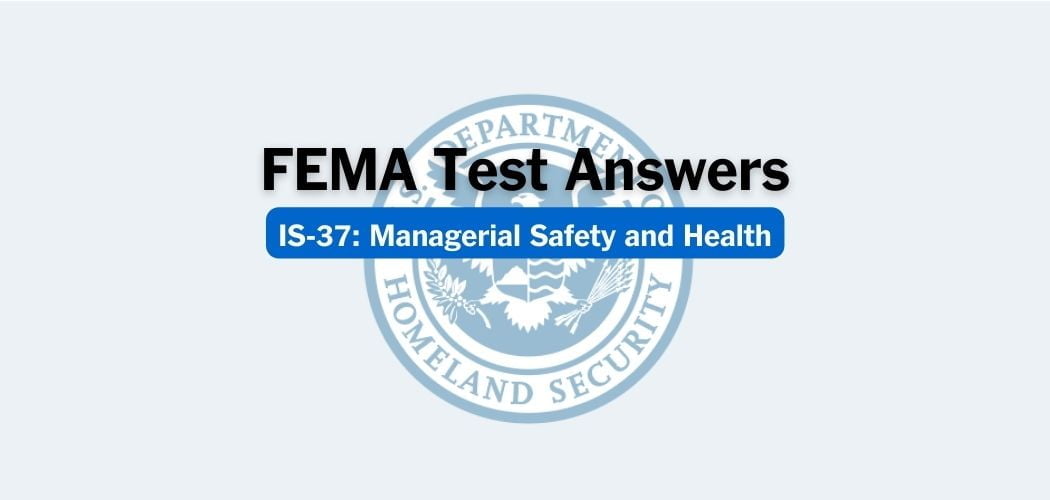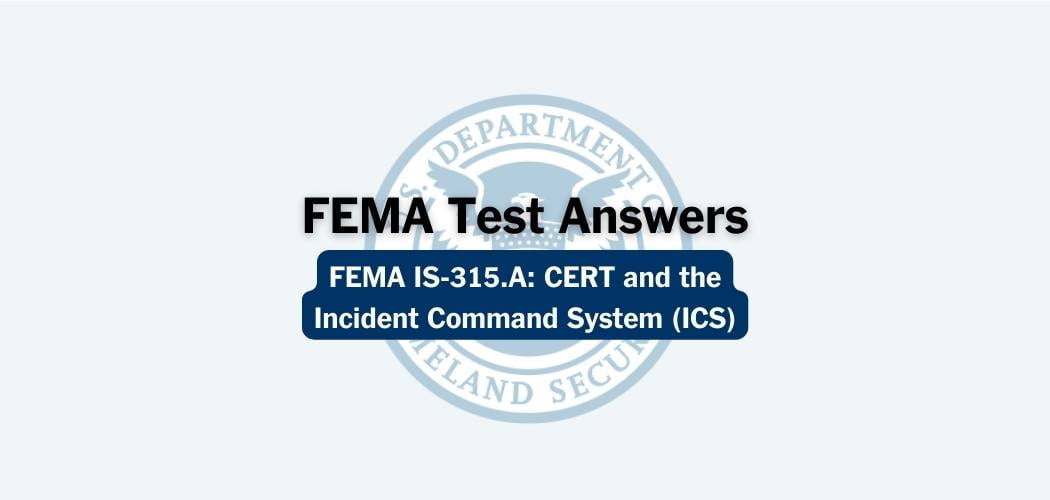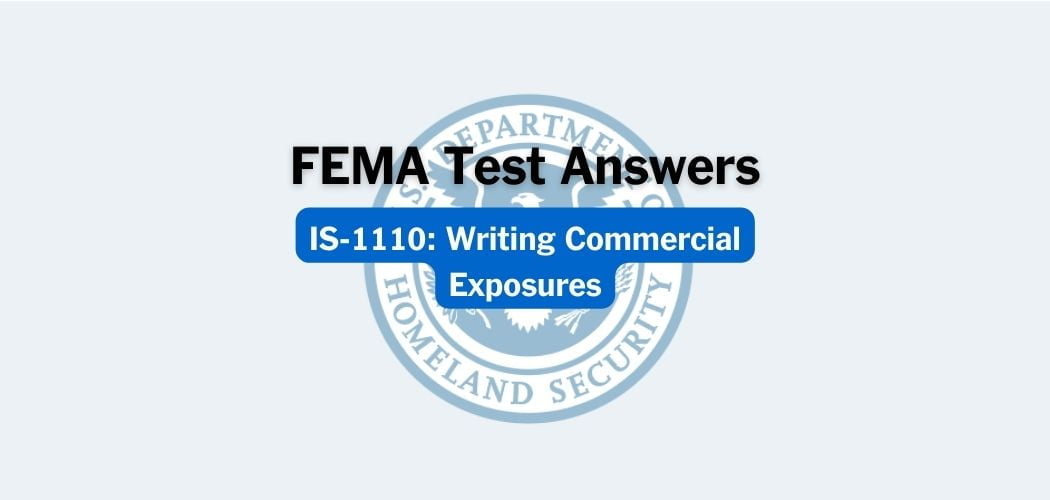Overview: The FEMA IS-2700 course was published on 3/17/2018 to introduce participants to the concepts and principles of the National Mitigation Framework. The goal of this course is to familiarize participants with the National Mitigation Framework, which outlines how the nation can expand its commitment to mitigation and strengthen resilience.
At the end of this course, the participants will be able to describe how the National Mitigation Framework is applied to meet the challenge of building a society that is robust, adaptable, and has the capacity for rapid recovery.
Primary Audience: FEMA IS-2700 course is intended for government executives, private-sector and nongovernmental organization (NGO) leaders, and emergency management practitioners. This includes senior elected and appointed leaders, such as Federal department or agency heads, State Governors, mayors, tribal leaders, and city or county officials – those who have a responsibility to provide for effective mitigation.
FEMA IS-2700 test answers
Each time this test is loaded, you will receive a unique set of questions and answers. The test questions are scrambled to protect the integrity of the exam.
Question 1. Which guiding principle for Mitigation states that there is a common understanding that future disasters will occur and that every person has a responsibility to prepare for these risks?
A. Shared Risk-conscious Culture✅
B. Resilience and Sustainability
C. Engaged Partnerships and Inclusiveness
D. Leadership and Locally Focused Implementation
Question 2. The National Preparedness Goal sets the vision for preparedness nationwide and identifies the core capabilities necessary to achieve that vision across five mission areas.
A. TRUE✅
B. FALSE
Question 3. Which Mitigation core capability includes the recognition, understanding, communication of, and planning for risk that empowers individuals and communities to make informed risk management decisions necessary to adapt to, withstand, and quickly recover from future incidents?
A. Threats and Hazards Identification
B. Community Resilience✅
C. Cybersecurity
D. Long-term Vulnerability Reduction
Question 4. State, tribal, territorial, and insular area governments promote resilience by passing legislation that incorporates or facilitates mitigation activities.
A. TRUE✅
B. FALSE
Question 5. Which Mitigation core capability allows decision-makers, responders, and community members to take informed actions to reduce their entity’s risk?
A. Threats and Hazards Identification
B. Community Resilience
C. Risk and Disaster Resilience Assessment✅
D. Long-term Vulnerability Reduction
Question 6. Structures that advance mitigation include all of the following EXCEPT:
A. The National Counterterrorism Center
B. State hazard mitigation planning committees
C. Regional/Metropolitan planning organizations
D. Long-term recovery groups✅
Question 7. Which guiding principle for Mitigation involves preparing people, property, critical infrastructure resources, and the economy to withstand or absorb the impact of an incident and enables the community to rebound?
A. Shared Risk-conscious Culture
B. Resilience and Sustainability✅
C. Engaged Partnerships and Inclusiveness
D. Leadership and Locally Focused Implementation
Question 8. The National Mitigation Framework addresses how to:
A. Save lives, protect property and the environment, and meet basic human needs after an incident has occurred.✅
B. Prevent damage from a natural disaster, such as a tornado or a flood.
C. Reduce the loss of life and property by lessening the impact of disasters.
D. Prevent, avoid, or stop a threatened or actual act of terrorism.
Question 9. Which Federal department or agency is responsible for coordinating preparedness activities, including mitigation activities, to respond to and recover from terrorist attacks, natural disasters, and other emergencies?
A. Department of State
B. Department of Homeland Security✅
C. Office of the Director of National Intelligence
D. Department of Justice
Question 10. Which of the following is a mitigation responsibility of a local government?
A. Local law enforcement coordinates activities with the National Guard during an incident
B. Local governments develop, assess, and implement core capabilities with emphasis given to the economy✅
C. Local law enforcement agencies conduct criminal investigations and can identify imminent acts of terrorism
D. Local governments coordinate directly with the President to ensure mitigation activities are underway
Question 11. Which of the three cross-cutting core capabilities is described as the delivery of coordinated, prompt, reliable, and actionable information to the whole community through the use of clear, consistent, accessible, and culturally and linguistically appropriate methods to effectively relay information regarding any threat or hazard, as well as the actions being taken and the assistance being made available, as appropriate?
A. Planning
B. Operational Coordination
C. Public Information and Warning✅
Question 12. Which of the following is NOT a characteristic of the National Mitigation Framework?
A. Aligns key roles and responsibilities when responding to a terrorist attack.✅
B. Describes the coordination efforts to deliver the capabilities defined in the National Preparedness Goal
C. Enables the whole community to contribute to and benefit from national preparedness.
D. Is the thread that permeates the fabric of national preparedness
Question 13. Which stakeholder is responsible for the coordination of the national assessment and report on the progress made within the mitigation core capabilities?
A. Local government
B. Federal government✅
C. Individuals, families, and households
D. Nongovernmental organizations
E. Communities
Question 14. Which national coordinating structure leverages the expertise and institutional knowledge to enhance the protection and resilience of the Nation’s critical infrastructure?
A. National Security Council
B. Mitigation Framework Leadership Group
C. Sector-Specific Agencies (SSA)✅
Question 15. The National Mitigation Framework seeks to enable the whole community to contribute to and benefit from national preparedness.
A. TRUE✅
B. FALSE
Question 16. Which of the three cross-cutting core capabilities is described as a systematic process engaging the whole community as appropriate in the development of executable strategic, operational, and/or tactical-level approaches to meet defined objectives?
A. Planning✅
B. Operational Coordination
C. Public Information and Warning
Question 17. Which Mitigation core capability involves building and sustaining resilient systems, communities, critical infrastructure, and key resource lifelines?
A. Threats and Hazards Identification
B. Community Resilience
C. Cybersecurity
D. Long-term Vulnerability Reduction✅
Question 18. Which of the following does NOT describe core capabilities?
A. They are exclusive to the federal government and cannot be applied at the local level.✅
B. They are distinct critical elements necessary to meet the National Preparedness Goal.
C. They provide a common language for preparedness across the whole community.
D. They are essential for the execution of each mission area: Prevention, Protection, Mitigation, Response, and Recovery.
Question 19. Which guiding principle for Mitigation states that leaders at the state, tribal, territorial, insular area and Federal levels support local leadership?
A. Shared Risk-conscious Culture
B. Resilience and Sustainability
C. Engaged Partnerships and Inclusiveness
D. Leadership and Locally Focused Implementation✅
Question 20. Which national coordinating structure coordinates mitigation efforts across the Federal Government and assesses the effectiveness of mitigation capabilities?
A. National Security Council
B. Mitigation Framework Leadership Group✅
C. Sector-Specific Agencies (SSA)



